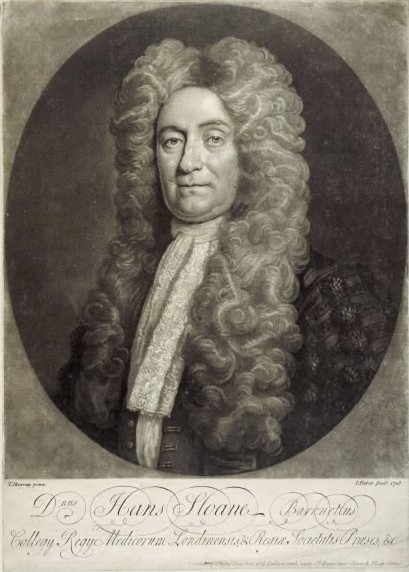|
Tessellated Roof
Tessellated roof is a frame and a self-supporting structural system in architecture. A simple ridged roof may inside be a tessellated system. The interlinking shapes are replicated across the moulded surface using curvilinear coordinates, a specific technique with rigid interlinking beams, having characteristics similar to woven fabric. A tessellated roof is one of the most flexible framed systems to design. The measurements and precision are complex and commonly part of a computer-aided design process of production. It is used in a honeycomb geometry form, in the biomes of the Eden Project. It can be fabricated to fit a wide range of situations. The size of the repeated geometric shape used can be customised, with a multitude of the same shape throughout the structure. An even and equal load is shared by the interlocking structural integrity of the frame as a whole. The use of a tessellated roof for public areas is an increasingly implemented architectural feature of modern pub ... [...More Info...] [...Related Items...] OR: [Wikipedia] [Google] [Baidu] |
British Museum Great Court, London, UK - Diliff
British may refer to: Peoples, culture, and language * British people, nationals or natives of the United Kingdom, British Overseas Territories, and Crown Dependencies. ** Britishness, the British identity and common culture * British English, the English language as spoken and written in the United Kingdom or, more broadly, throughout the British Isles * Celtic Britons, an ancient ethno-linguistic group * Brittonic languages, a branch of the Insular Celtic language family (formerly called British) ** Common Brittonic, an ancient language Other uses *''Brit(ish)'', a 2018 memoir by Afua Hirsch *People or things associated with: ** Great Britain, an island ** United Kingdom, a sovereign state ** Kingdom of Great Britain (1707–1800) ** United Kingdom of Great Britain and Ireland (1801–1922) See also * Terminology of the British Isles * Alternative names for the British * English (other) * Britannic (other) * British Isles * Brit (other) * B ... [...More Info...] [...Related Items...] OR: [Wikipedia] [Google] [Baidu] |
Toughened Glass
Tempered or toughened glass is a type of safety glass processed by controlled thermal or chemical treatments to increase its strength compared with normal glass. Tempering puts the outer surfaces into compression and the interior into tension. Such stresses cause the glass, when broken, to shatter into small granular chunks instead of splintering into jagged shards as ordinary annealed glass does. The granular chunks are less likely to cause injury. Tempered glass is used for its safety and strength in a variety of applications, including passenger vehicle windows, shower doors, aquariums, architectural glass doors and tables, refrigerator trays, mobile phone screen protectors, bulletproof glass components, diving masks, and plates and cookware. Properties Tempered glass is about four times stronger than annealed glass. The greater contraction of the inner layer during manufacturing induces compressive stresses in the surface of the glass balanced by tensile stresses in the ... [...More Info...] [...Related Items...] OR: [Wikipedia] [Google] [Baidu] |
Structural Engineering
Structural engineering is a sub-discipline of civil engineering in which structural engineers are trained to design the 'bones and muscles' that create the form and shape of man-made structures. Structural engineers also must understand and calculate the stability, strength, rigidity and earthquake-susceptibility of built structures for buildings and nonbuilding structures. The structural designs are integrated with those of other designers such as architects and building services engineer and often supervise the construction of projects by contractors on site. They can also be involved in the design of machinery, medical equipment, and vehicles where structural integrity affects functioning and safety. See glossary of structural engineering. Structural engineering theory is based upon applied physical laws and empirical knowledge of the structural performance of different materials and geometries. Structural engineering design uses a number of relatively simple structural c ... [...More Info...] [...Related Items...] OR: [Wikipedia] [Google] [Baidu] |
Roofs
A roof ( : roofs or rooves) is the top covering of a building, including all materials and constructions necessary to support it on the walls of the building or on uprights, providing protection against rain, snow, sunlight, extremes of temperature, and wind. A roof is part of the building envelope. The characteristics of a roof are dependent upon the purpose of the building that it covers, the available roofing materials and the local traditions of construction and wider concepts of architectural design and practice, and may also be governed by local or national legislation. In most countries, a roof protects primarily against rain. A verandah may be roofed with material that protects against sunlight but admits the other elements. The roof of a garden conservatory protects plants from cold, wind, and rain, but admits light. A roof may also provide additional living space, for example, a roof garden. Etymology Old English 'roof, ceiling, top, summit; heaven, sky', also f ... [...More Info...] [...Related Items...] OR: [Wikipedia] [Google] [Baidu] |
Space Frame
In architecture and structural engineering, a space frame or space structure ( 3D truss) is a rigid, lightweight, truss-like structure constructed from interlocking struts in a geometric pattern. Space frames can be used to span large areas with few interior supports. Like the truss, a space frame is strong because of the inherent rigidity of the triangle; flexing loads (bending moments) are transmitted as tension and compression loads along the length of each strut. History Alexander Graham Bell from 1898 to 1908 developed space frames based on tetrahedral geometry. Bell's interest was primarily in using them to make rigid frames for nautical and aeronautical engineering, with the tetrahedral truss being one of his inventions. Max Mengeringhausen developed the space grid system called MERO (acronym of ''MEngeringhausen ROhrbauweise'') in 1943 in Germany, thus initiating the use of space trusses in architecture. The commonly used method, still in use has individual tubular m ... [...More Info...] [...Related Items...] OR: [Wikipedia] [Google] [Baidu] |
Reciprocal Frame
A reciprocal frame is a class of self-supporting structure made of three or more beams and which requires no center support to create roofs, bridges or similar structures. Construction Reciprocal roofs tend to be constructed in one of two ways. If built using dimension-ed timber each rafter is usually jointed into the previous one. More commonly these roofs are constructed with roundwood poles where each rafter is laid upon the previous one. In both of these approaches the roof is assembled by installing a temporary central support that holds the first rafter at the correct height. The first rafter is fitted between the wall and the temporary central support and then further rafters are added, each resting on the last. The final rafter fits on top of the previous rafter and under the very first one. The rafters are then tied before the temporary support is removed. The structure is most effective at lower pitches where there is minimal spreading force exerted at the ringbeam most be ... [...More Info...] [...Related Items...] OR: [Wikipedia] [Google] [Baidu] |
London
London is the capital and largest city of England and the United Kingdom, with a population of just under 9 million. It stands on the River Thames in south-east England at the head of a estuary down to the North Sea, and has been a major settlement for two millennia. The City of London, its ancient core and financial centre, was founded by the Romans as '' Londinium'' and retains its medieval boundaries.See also: Independent city § National capitals The City of Westminster, to the west of the City of London, has for centuries hosted the national government and parliament. Since the 19th century, the name "London" has also referred to the metropolis around this core, historically split between the counties of Middlesex, Essex, Surrey, Kent, and Hertfordshire, which largely comprises Greater London, governed by the Greater London Authority.The Greater London Authority consists of the Mayor of London and the London Assembly. The London Mayor is distinguished fr ... [...More Info...] [...Related Items...] OR: [Wikipedia] [Google] [Baidu] |
British Museum
The British Museum is a public museum dedicated to human history, art and culture located in the Bloomsbury area of London. Its permanent collection of eight million works is among the largest and most comprehensive in existence. It documents the story of human culture from its beginnings to the present.Among the national museums in London, sculpture and decorative and applied art are in the Victoria and Albert Museum; the British Museum houses earlier art, non-Western art, prints and drawings. The National Gallery holds the national collection of Western European art to about 1900, while art of the 20th century on is at Tate Modern. Tate Britain holds British Art from 1500 onwards. Books, manuscripts and many works on paper are in the British Library. There are significant overlaps between the coverage of the various collections. The British Museum was the first public national museum to cover all fields of knowledge. The museum was established in 1753, largely b ... [...More Info...] [...Related Items...] OR: [Wikipedia] [Google] [Baidu] |
Queen Elizabeth II Great Court
The Queen Elizabeth II Great Court, commonly referred to simply as the Great Court, is the covered central quadrangle of the British Museum in London. It was redeveloped during the late 1990s to a design by Foster and Partners, from a 1970s design by Colin St John Wilson. The court was opened by Queen Elizabeth II in 2000. Description The court has a tessellated glass roof, engineered by Buro HappoldQueen Elizabeth II Great Court, British Museum accessed 22 November 2010 and built by , covering the entire court, and surrounds the original circular |
Galleria Vittorio Emanuele II
The Galleria Vittorio Emanuele II () is Italy's oldest active shopping gallery and a major landmark of Milan in Italy. Housed within a four-story double arcade in the centre of town, the ''Galleria'' is named after Victor Emmanuel II, the first king of the Kingdom of Italy. It was designed in 1861 and built by architect Giuseppe Mengoni between 1865 and 1877. Architecture The structure consists of two glass-vaulted arcades intersecting in an octagon covering the street connecting Piazza del Duomo to Piazza della Scala. The street is covered by an arching glass and cast iron roof, a popular design for 19th-century arcades, such as the Burlington Arcade in London, which was the prototype for larger glazed shopping arcades, beginning with the Saint-Hubert Gallery in Brussels (opened in 1847), the Passazh in St Petersburg (opened in 1848), the Galleria Umberto I in Naples (opened in 1890), and the Budapest Galleria. The central octagonal space is topped with a glass dome. The Mila ... [...More Info...] [...Related Items...] OR: [Wikipedia] [Google] [Baidu] |




